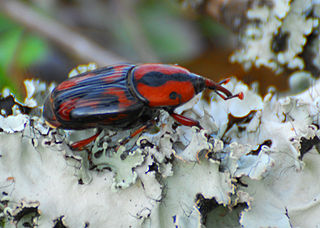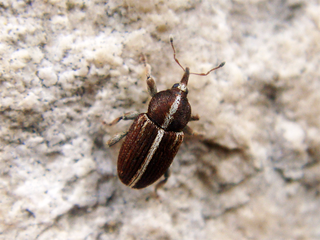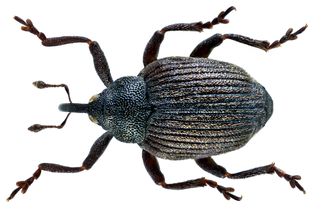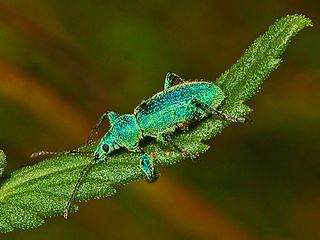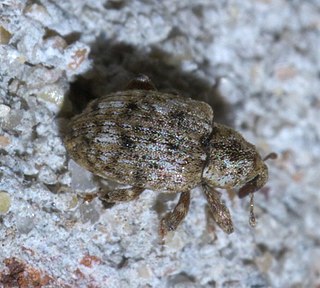| Rhynchophorini | |
|---|---|
 | |
| Male (left) and female specimens of Cyrtotrachelus dux | |
| Scientific classification | |
| Kingdom: | Animalia |
| Phylum: | Arthropoda |
| Class: | Insecta |
| Order: | Coleoptera |
| Family: | Curculionidae |
| Subfamily: | Dryophthorinae |
| Tribe: | Rhynchophorini Schönherr, 1838 |


The tribe Rhynchophorini is the largest member of the true weevil subfamily Dryophthorinae. Alonso-Zarazaga and Lyal (1999) treated it as a distinct subfamily, Rhynchophorinae (in the family Dryophthoridae). [1] Weevils of this tribe have the pygidium (VII abdominal tergite) not covered by the elytra.
In biology, a tribe is a taxonomic rank above genus, but below family and subfamily. It is sometimes subdivided into subtribes. By convention, all taxonomic ranks above genus are capitalized, including both tribe and subtribe.
In biological classification, a subfamily is an auxiliary (intermediate) taxonomic rank, next below family but more inclusive than genus. Standard nomenclature rules end subfamily botanical names with "-oideae", and zoological names with "-inae".
Dryophthorinae is a weevil subfamily within the family Curculionidae. While it is not universally accepted as distinct from other curculionid subfamilies, at least one major recent revision elevated it to family rank, as Dryophthoridae
This tribe includes the largest weevils of the subfamily, such as palm weevils.


